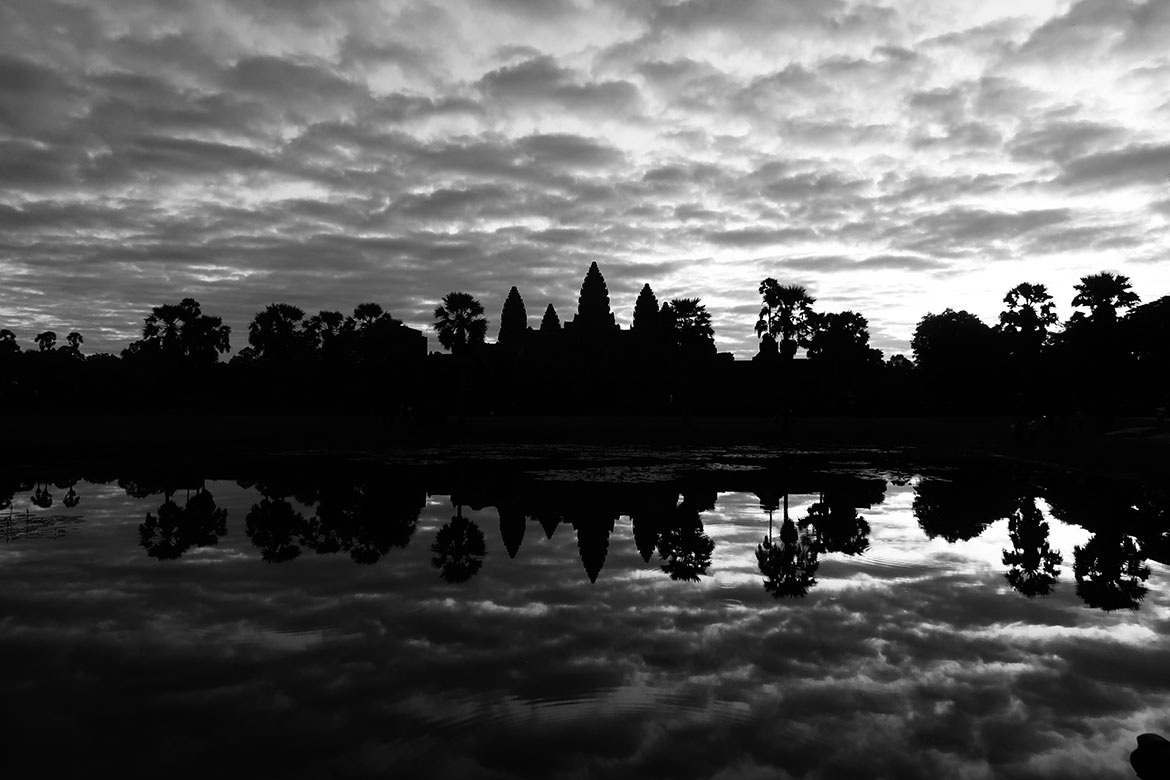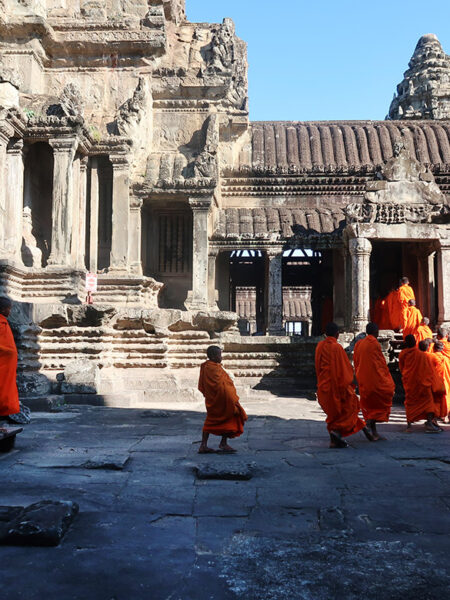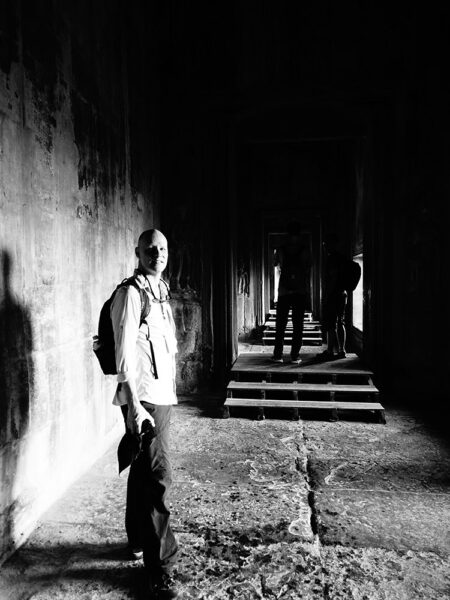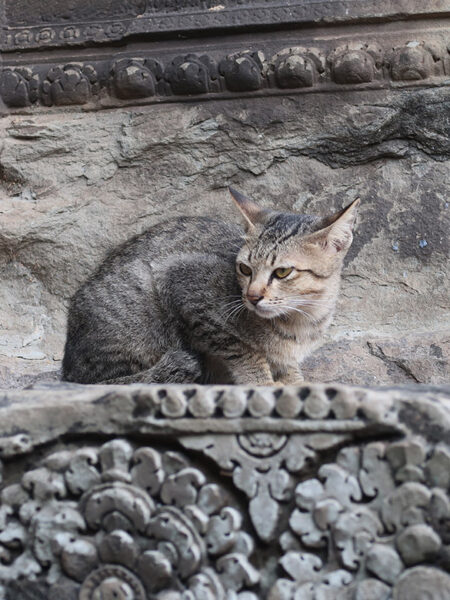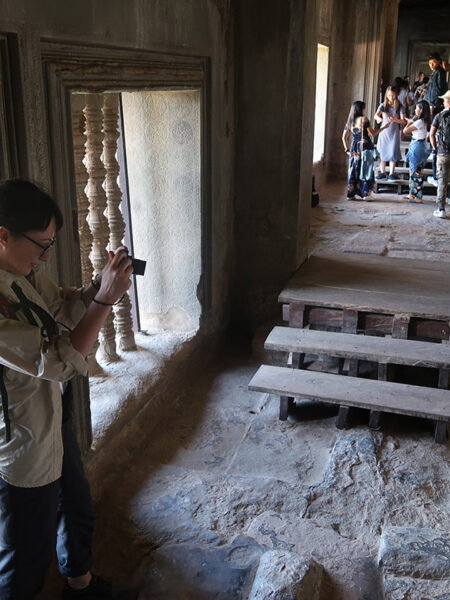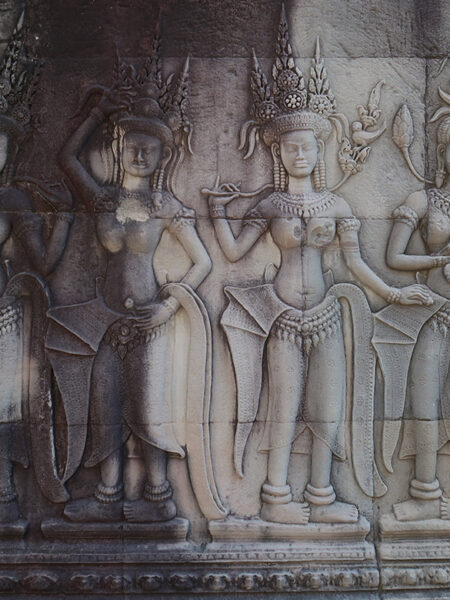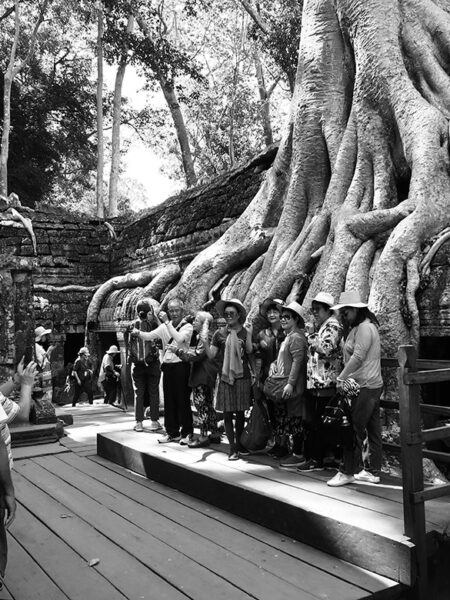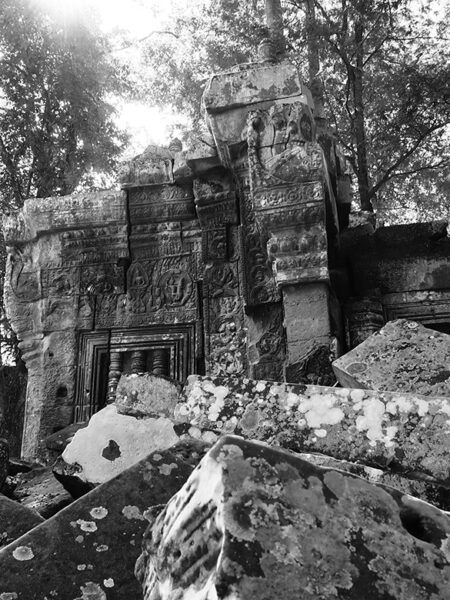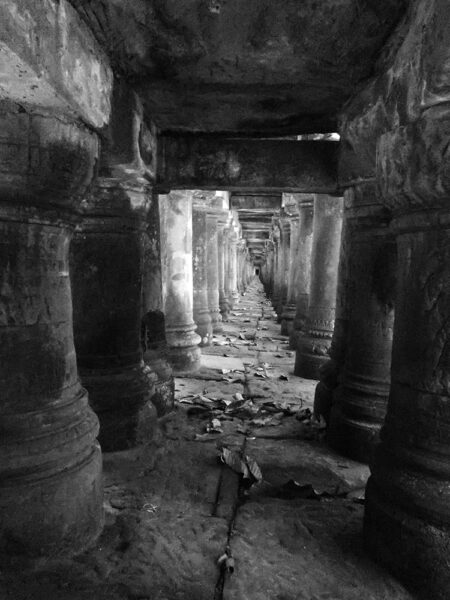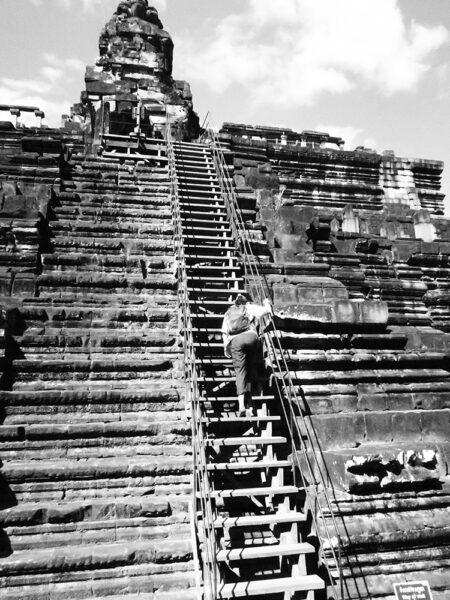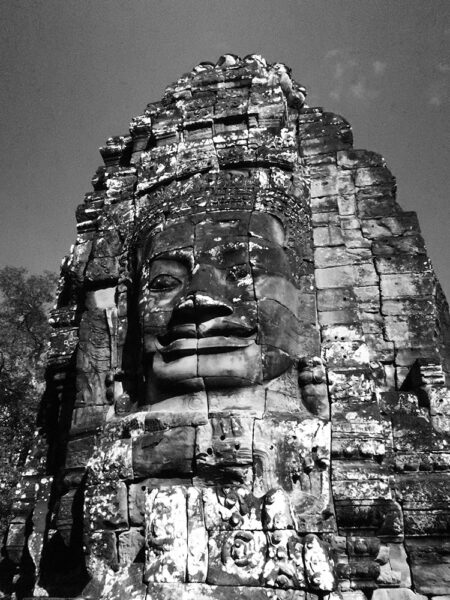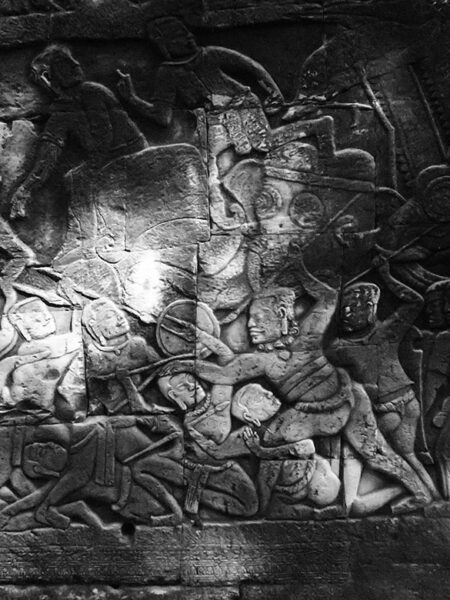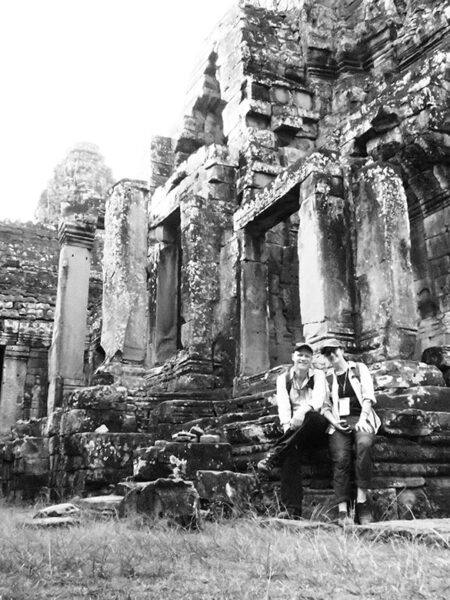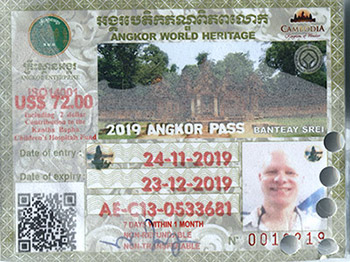 Woke at 4am! We got our stuff together and went down to the lobby at 4.30am to meet our driver Chheab, a nice young guy with a big smile. The hotel gave us breakfast-to-go in a bag, and Chheab drove us north about 8km into the pre-dawn night to a large modern ticket office to get our 7 day ticket to the Angkor temples (Chheab also bought us plastic lanyards to hold them). Then on to the site itself. Of course many other people were there to see the dawn rise over Angkor Wat: we joined a small crowd walking over a floating pontoon bridge (which bounced unnervingly in the dark) and through a gate; and by the light of other people’s torches we claimed a spot on the shore of a small pond. Soon hundreds of us were crammed together like fans at a football match to see the sky lighten and the mountainous silhouette of Angkor Wat’s towers slowly become more refined and filled in with detail, like a graphite drawing sketched on the horizon.
Woke at 4am! We got our stuff together and went down to the lobby at 4.30am to meet our driver Chheab, a nice young guy with a big smile. The hotel gave us breakfast-to-go in a bag, and Chheab drove us north about 8km into the pre-dawn night to a large modern ticket office to get our 7 day ticket to the Angkor temples (Chheab also bought us plastic lanyards to hold them). Then on to the site itself. Of course many other people were there to see the dawn rise over Angkor Wat: we joined a small crowd walking over a floating pontoon bridge (which bounced unnervingly in the dark) and through a gate; and by the light of other people’s torches we claimed a spot on the shore of a small pond. Soon hundreds of us were crammed together like fans at a football match to see the sky lighten and the mountainous silhouette of Angkor Wat’s towers slowly become more refined and filled in with detail, like a graphite drawing sketched on the horizon.
That first sight of the towers in the darkness was a shock—Carol pointed them out to me because I had first thought they were huge nearby trees. When I realised what and where they were, I was stunned by their scale.
Of course, even though so many people were gathered in one spot to see the sunrise (an anti-climactic event, it turned out), some idiots still saw fit to wander across the field of view, completely ignoring the fact that so many cameras were pointed in their direction. Just the first example of the astonishingly thoughtless tourist behaviour we were to encounter over the next few days!
Before the sun had finally crested the towers, we wandered over to a stall and bought coffees. Then we sat on the stones of a small library building—two of them flank the long causeway leading to Angkor Wat—and had our simple breakfast while we surveyed the incredible scene in the light of day—the monumental wall and gates, the long raised causeway, and of course the huge, imposing bulk of the temple itself.
Tourists milled about everywhere, but the site is so big (in fact, Angkor Wat is the largest religious monument in the world) it wasn’t aggravating. We headed into the main temple and began examining its gorgeous bas-reliefs; 800m of them in a gallery encircling the complex. I had heard that only limited numbers of people were allowed up on the top level of the central structure, so I rushed ahead and joined a long queue, losing Carol and not realising she didn’t know the basic layout of the place. So after 20 minutes in the queue expecting her to catch up, I finally abandoned my place and found her. Needless to say she wasn’t impressed as she had been waiting for me at the entrance!
After this confusion we got back into the queue and eventually scaled an extremely steep set of wooden stairs (built over the original stone ones) to what is known as the Bakan Sanctuary at the top. Here were stunning views, and a group of Buddhist monks (most of them children) moved around the cardinal stations surrounding the central tower, chanting at each stop.
We explored more of Angkor Wat, then returned back over the pontoon bridge to the car. Our next stop was Ta Prohm, known as the ‘Tomb Raider temple’ since a few scenes from that film were shot there. And didn’t the tourists love it—lining up to be photographed at the spot, featured in the film, where a giant tree’s roots draped over a doorway. Despite the idiot bus groups jabbering at the tops of their voices and pretending to hold up ruined doorways in posed photos, the temple was incredibly atmospheric. The jungle has been manicured and only the most spectacular fusions of tree and architecture remain, but it still felt like the quintessential jungle temple.
Time for lunch, as the heat and humidity began to mount. Chheab took us to a place to eat (very overpriced, but what do you expect within the grounds of such a popular tourist spot) where we had lunch reclining on shaded, individual raised platforms in an outdoor area.
Then into the huge walled area called Angkor Thom, which is dominated by the Bayon, King Jayavarman VII’s state temple in the 12th century. We first visited the Baphuon however, an even earlier temple which we reached by walking along an impressive raised causeway. Steep steps led up to an exposed upper level with wonderful views. Around the back, a huge reclining Buddha was carved into the retaining wall in the late 15th century, when the temple was converted to Buddhist use. The entire temple of 300,000 stones, much of it collapsed at the time, was taken apart by archaeologists, and then had to be pieced back together again over 16 years after the records were destroyed by the Khmer Rouge.
Our last stop for the day (11 hours of temple crawling) was the incredible Bayon, known for its 216 huge, softly smiling faces—either representations of Jayavarman VII himself or the bodhisattva of compassion (or perhaps both). Unfortunately the tourist hordes had returned now that the hottest part of the day had passed, and the atmosphere of the top level was ruined by idiots posing for photos—as usual, more interested in a self portrait for their Instagram pages than the place they had supposedly come to see. Carol and I decided to return at a quieter time.
We returned to the hotel (we are greeted by a staff member with cold washcloths on a tray every time we enter the front hall) and relaxed by the pool with a marguerita each. I had a refreshing swim. Too tired to eat out, we got a table for dinner poolside; the food and service was excellent.

